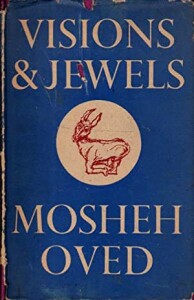The Good Time Guide to London is a book of surprises and delights. Earlier Jots have focussedmainly on its evocative descriptions of the now disappeared Docklands and the disreputable world of seedy nightclubs and ‘ dives ‘. But the book is also a handy guide to the world of old books and antiques in post war London. In one antiquarian bookshop ‘ near Davis Street ‘ a friend of the Guide writer picked up a book that interested him and asked the price, ‘thinking that a few guineas would be plenty to pay.” That will be £1,500 “, murmured the assistant, without turning a hair.

Our friend put that volume down as if he had been shot.’ One wonders what that book could have been that cost the equivalent of a quarter of a million quid today. And which shop might charge such a sum? That incident occurred in Mayfair. Chelsea and Kensington were the places to go for antiques before the trade expanded. In 1951, before the serious antiques arrived in Portobello Road, you were more likely to find the serial killer John Christie ( of nearby Rillington Place ) strolling along in search of victims than a French ormolu clock or a Georgian wine glass.
Unsurprisingly, two at least of the dealers mentioned in the Guide have now disappeared. One is a shop in Bond Street selling ‘ rare old amber ‘. This was the premises of S.J. Phillips, who boasted ( I seem to recall ) that it was the only shop devoted to amber in Britain. Your Jotter must have passed it twenty or more times, but did not go in, which he now regrets. The family that owned it produced the famous and very eccentric pure mathematician Dr Simon P. Norton, subject of that fascinating book, The Genius in My Basement. He lived in Cambridge, and until his death of a heart attack in 2019, was a campaigner against cars and a veteran champion of local transport systems. Wedded to a diet consisting of little else but pasta and oily fish, he worked on huge numbers, having earlier in his life achieved perfect scores in two Maths Olympiads. S.J. Phillips moved a few years ago to smaller premises in Bruton Street, just around the corner from their former Bond Street site, which is now occupied ( I think) by yet another posh frock shop.
The other curious emporium, which disappeared following the owner’s death in 1958, was Cameo Corner in Museum Street, a few minutes from the British Museum. The Guide described its owner as a poet who frequently could be seen wearing ‘ a long velvet robe of dark violet ‘. His shop, the Guide continues, ‘is one of the most interesting in London, with an immense selection of various things from a silver hat pin to a gem-studded ancient Russian samovar. ‘ The owner, who is not identified, was ‘ an excellent designer of jewellery, once had a genuine Elizabethan miniature frame made of pale silver, emeralds and unpolished diamonds, and took the frame apart, making brooches and matching ear- rings from it, with the most pleasing results. He also sold old gold seals ‘ very suitable for charm bracelets, if you like that sort of thing ‘.
Research reveals that this poetic jeweller was called Mosheh Oved ( aka Edward Good) , who was born in Russian occupied Poland in 1885, initially wanted to become a rabbi, but ended up training to be a watchmaker in 1903. In 1917 he arrived in England and in 1938 opened ‘ Cameo Corner ‘ at 26, Museum Street, where he gained a reputations as an innovative jeweller with a specialism in cameos and rings. He was patronised by royalty, including Queen Mary, and by wealthy connoisseurs from all over the world. He became a friend of sculptor Jacob Epstein, who illustrated one of his publications ( The Book of Affinity, 1935). He was also a founding member of the Ben Uri Jewish Art Society. In 1940 Faber and Faber published For the Sake of the Days, a collection of his poetry. Twelve years later they brought out his autobiography, Visions and Jewels. Today, some of the rings Oved created in the shape of animals fetch five figure sums at auction. He died in 1958 aged 73. [R.M.Healey]

Fascinating as always dear jotters—-I seem to recall there is also a shop devoted to amber in Southwold Suffolk.